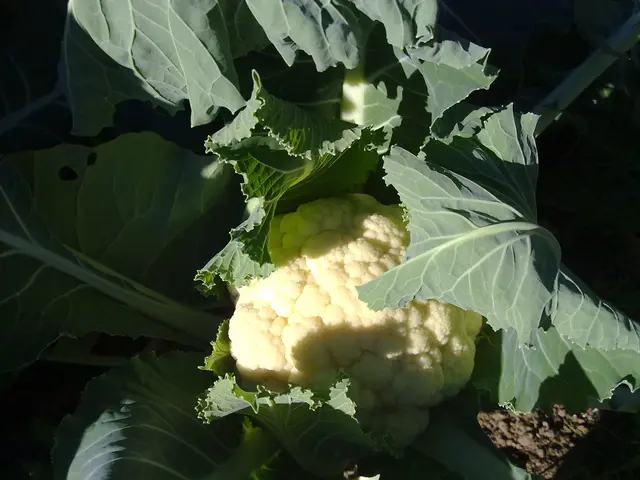Thai cuisine is commonly known for its intense spiciness.
Fiery Thai Treats and Their Spicy Roots
Step into any Thai eatery, and chances are, your taste buds will encounter a spicy delight - be it the mouth-watering Tom Yam Kung or the refreshingly tangy Som Tum. Why is Thailand's culinary scene so passionate about heat? Let's delve deeper.
One convincing theory suggests a climate-driven motivation. Thailand's tropical heat and humidity create a breeding ground for bacteria and fungi, causing food to spoil rapidly. To counteract this, traditional Thai recipes often incorporate piquant components such as chilies - boasting capsaicin, a compound that deters the growth of microbes, naturally preserving food without the need for modern preservation methods prevalent in cooler climates.
A South American Sojourn
Contrary to belief, chilies haven't always been a fixture in Thai kitchens. Originating from South America, chilies made their Asian debut courtesy of Portuguese explorers in the 16th century. Adapting to local preferences, the versatile chili slowly became a household pantry essential across Thailand.
In addition to bringing mouth-numbing heat, chilies play an emotional role in Thai cuisine. Sweating, induced by consuming spicy foods, helps cool the body in the steamy tropical climate, while stirring up a sense of invigorating freshness amidst the heat.
Beyond its preservative prowess, spicy Thai dishes offer various health advantages. Chilies are teeming with vitamin C, bolster the immune system, alleviate coughs, lessen phlegm production, and may even diminish cholesterol levels.
However, moderation is key. Overindulgence in spicy foods, especially for individuals with sensitive digestive systems, could exacerbate health issues like gastritis, chronic bowel inflammation, and acid reflux. These conditions should not be underestimated.
Therefore, if you're a devotee of Thailand's fiery flavors, indulge away - but exercise restraint. Your taste buds might thank you, but your stomach will express its gratitude wholeheartedly.
Gourmet History of Chili Peppers
Chilies, a cornerstone ingredient in Thai cuisine, boast a captivating global journey. Originating in South America, they were introduced to Asia in the 16th century by European traders traveling during the Columbian Exchange. This cultural exchange, sparked by Christopher Columbus's discovery of the Americas, involved an extensive transfer of plants, animals, and foodstuffs between continents[1].
Chilies found their way to Southeast Asia, including Thailand, through Portuguese traders and missionaries who first arrived in the region. The newcomers quickly integrated chilies into local cuisines, appreciating their adaptability, flavor, and medicinal properties. The powerful, spicy quality of chilies resonated with traditional Thai tastes and gradually became a common kitchen ingredient[1].
Thai cuisine thrives on balance, and the incorporation of chilies heightened dishes' spicy dimension. Small and potent bird's-eye chilies became an indispensable element in Thai dishes such as curries, salads, and soups like Tom Yum and Som Tam[2][3], underscoring the significance of chilies in Thai cooking's vibrant culinary identity.
[[1] Collard, M. (2011, February 8). Central America and the World. Ancient History Encyclopedia. Retrieved February 14, 2023, from https://www.ancient.eu/article/473/][[2] Asian Agri-food (n.d.). History of the Chili Pepper. Southeast Asian Regional Centre for Graduate Study and Research in Agriculture. Retrieved February 14, 2023, from https://www.searca.org/sectag/history-chili-pepper][[3] ThaiFood.com (n.d.). History of Chili Peppers in Thailand. Thai Food and Travel. Retrieved February 14, 2023, from https://www.thai-food.com/thai-history.htm][[4] Kittiphanroongrod, W., & Yoovidhya, S. (n.d.). Traditional Foods for Health – Health Claims for Popular Foods of the World: Thailand. Faculty of Health Sciences, Prince of Songkla University. Retrieved February 14, 2023, from https://www.ncbi.nlm.nih.gov/books/NBK92756/][[5] King, M., & Rerkchiengwiriyapimol, W. (2014). Thai Food and Cultural Identity. Routledge. Retrieved February 14, 2023, from https://doi.org/10.4324/9781315521801]
In the culinary landscape of Thailand, chilies, native to South America, have a rich history. First introduced by Portuguese traders in the 16th century, these fiery peppers became an integral part of Thai cooking. Beyond their spicy flavor, chilies offer health-and-wellness benefits, such as boosting the immune system and reducing cholesterol levels, making them a key component in the balanced and flavorful food-and-drink offerings of Thai lifestyle and health-and-wellness culture.








